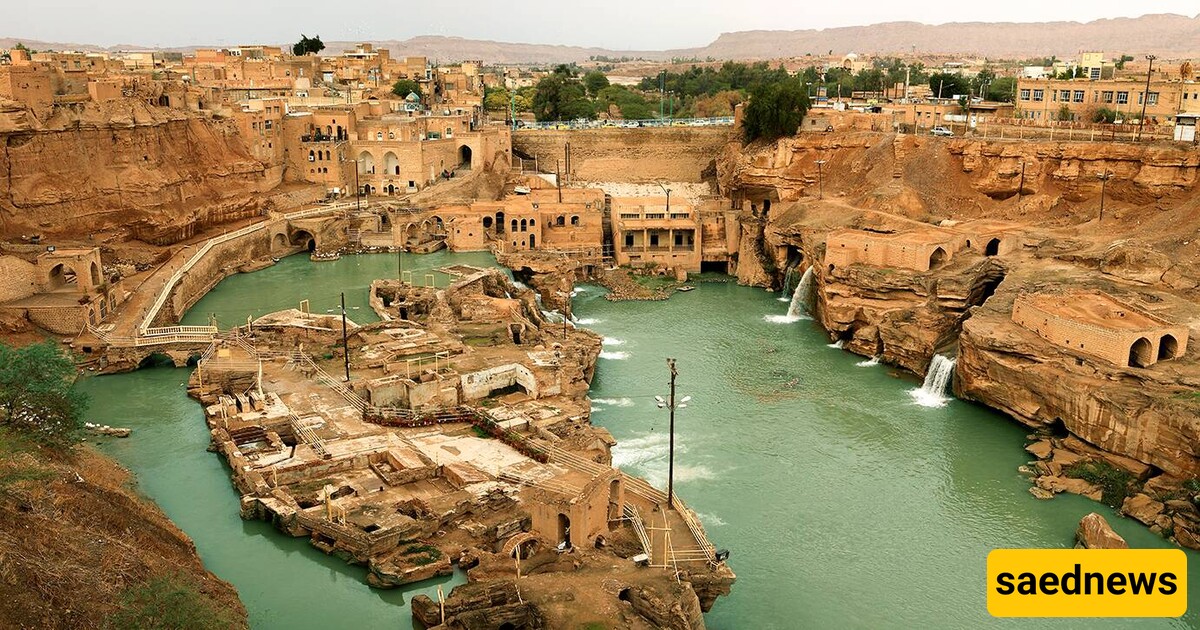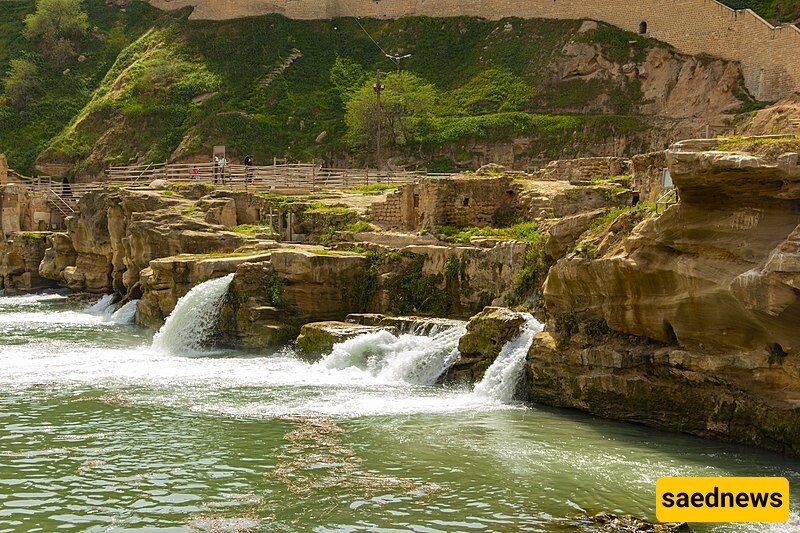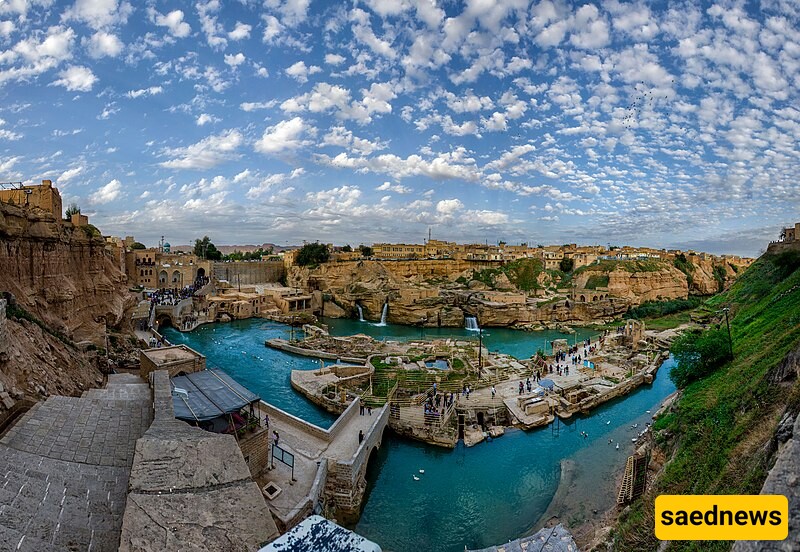SAEDNEWS: Iran’s Shushtar Historical Hydraulic System, an ancient water management complex dating back to the Sassanid era, is recognized as a UNESCO World Heritage site. This engineering marvel, with its iconic waterfalls and mills, exemplifies Persian ingenuity in harnessing natural resources.

Reporting from SAEDNEWS, situated in Iran's Khuzestan Province, the Shushtar Historical Hydraulic System is among the oldest and most intricate water management systems in existence, originating in the Sassanid era in the 3rd century AD. This vast network of waterfalls, canals, mills, and dams was constructed to control the Karun River, supplying water for agriculture and industry. Now a UNESCO World Heritage site, Shushtar draws admiration for its centuries-old engineering and historical significance.
Commissioned by Sassanid ruler Shapur I, the Shushtar system was built in the 3rd century with assistance from Roman engineers taken captive in battle. Designed to channel the Karun River's power, the system allowed efficient irrigation of farmlands, transforming the area into a fertile agricultural center. The water system also powered mills that ground grain and supported local industries, making Shushtar a vibrant economic hub in ancient Persia.
This engineering feat reflects Persian expertise in hydraulic technology and planning. With features like the Gargar Canal, which distributed water across the region, the system sustainably supported the local economy and reinforced Shushtar’s role as a key center for commerce and trade.
The waterfalls and mills at Shushtar are a visual and functional wonder, with water cascading over terraces and pools feeding an intricate network of canals. The Gargar Canal, the system’s main waterway, diverts the Karun River’s flow, creating waterfalls that power numerous mills. These mills harness the river's force to grind grains and support other essential tasks, reflecting how ancient societies efficiently used natural resources.
Clustered around the Gargar Canal, the mills were integral to the local economy, maximizing water use for multiple purposes to enhance both productivity and sustainability. The seamless blend of functionality and natural beauty at Shushtar draws engineers, historians, and tourists to this remarkable site.

Shushtar’s Hydraulic System includes various architectural features such as weirs, bridges, tunnels, and reservoirs. Notable components include:
Gargar Weir and Canal: This main structure diverts water from the Karun River, creating waterfalls that feed canals and drive the mills.
Dariosh Bridge and Dam: This structure regulates water flow and levels while controlling distribution to areas in need.
Tunnels and Aqueducts: Designed to transport water over distances, these rock-carved tunnels demonstrate advanced planning, directing water seamlessly through the system.
The system's sustainable design is a testament to the advanced skills of ancient Sassanid engineers, who built it to endure for centuries.
In addition to its technical achievements, the Shushtar Hydraulic System sustained local agriculture and industry, supporting residents by irrigating crops and powering mills. The area’s consistent water supply allowed Shushtar to thrive as an agricultural center, producing staple crops like wheat and barley. This, in turn, boosted the economy and fueled trade throughout the region.
Shushtar’s water system also holds cultural importance as a gathering place where locals and visitors alike come to relax, socialize, and celebrate. This site, a focal point of community life, still draws tourists, connecting them with Iran’s ancient cultural roots.
While not officially designated as a UNESCO World Heritage site, the Shushtar Hydraulic System is internationally recognized for its historical and engineering value. Efforts from Iranian heritage groups and the government focus on preserving this landmark, given its vulnerability to environmental changes and modernization pressures. Maintaining the integrity of the site involves addressing erosion and other natural factors that could harm the structure.
Promoting awareness through cultural programs and encouraging responsible tourism have also helped in preserving Shushtar’s legacy, allowing people to experience and learn about one of the most remarkable feats of ancient Persian engineering.

The Shushtar Waterfalls and Mills attract thousands of visitors each year, drawn by the site’s historic and aesthetic appeal. Its natural beauty and ancient engineering captivate visitors, who explore the canals, mills, and tunnels to appreciate the complex functions of the system. The site’s international acclaim has bolstered interest in Iranian heritage, with Shushtar emerging as a key destination for cultural tourism.
Guided tours offer insights into the engineering behind the hydraulic system, and the waterfalls’ beauty combined with the mills’ architecture make Shushtar a favorite spot for photographers and researchers.

The Shushtar Historical Hydraulic System stands as a symbol of Persian innovation in engineering and sustainability. Its sophisticated integration of water management for agriculture and industry remains a model of ancient design. Recognized by UNESCO, Shushtar serves as a lasting reminder of Persian expertise, bridging ancient history with modern-day appreciation. Through continued conservation efforts, Shushtar remains one of the world’s most remarkable achievements in hydraulic engineering.

